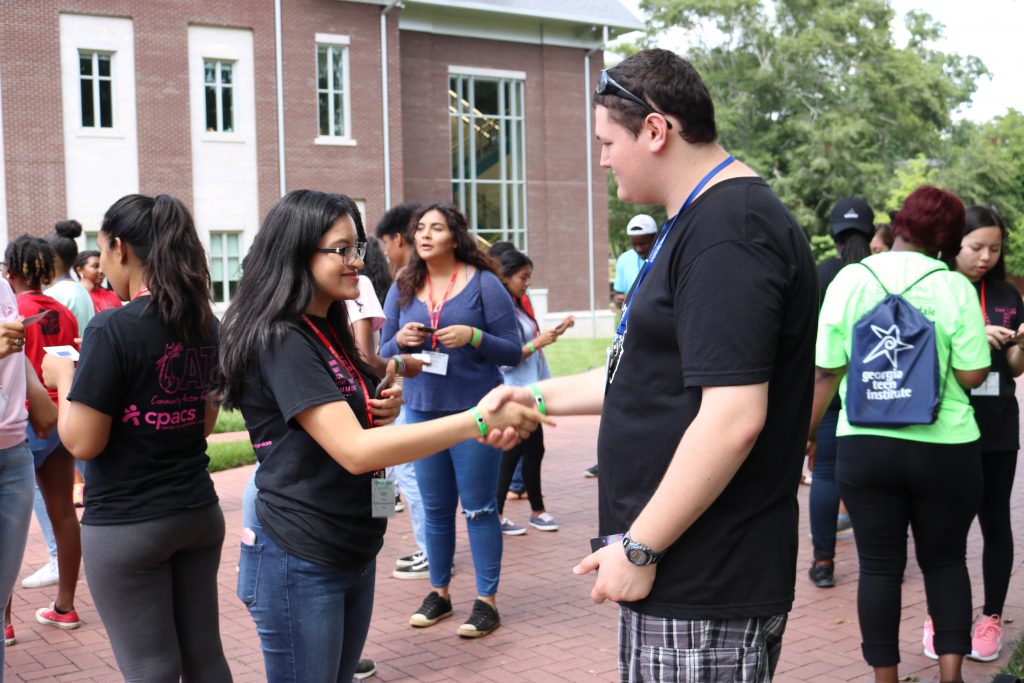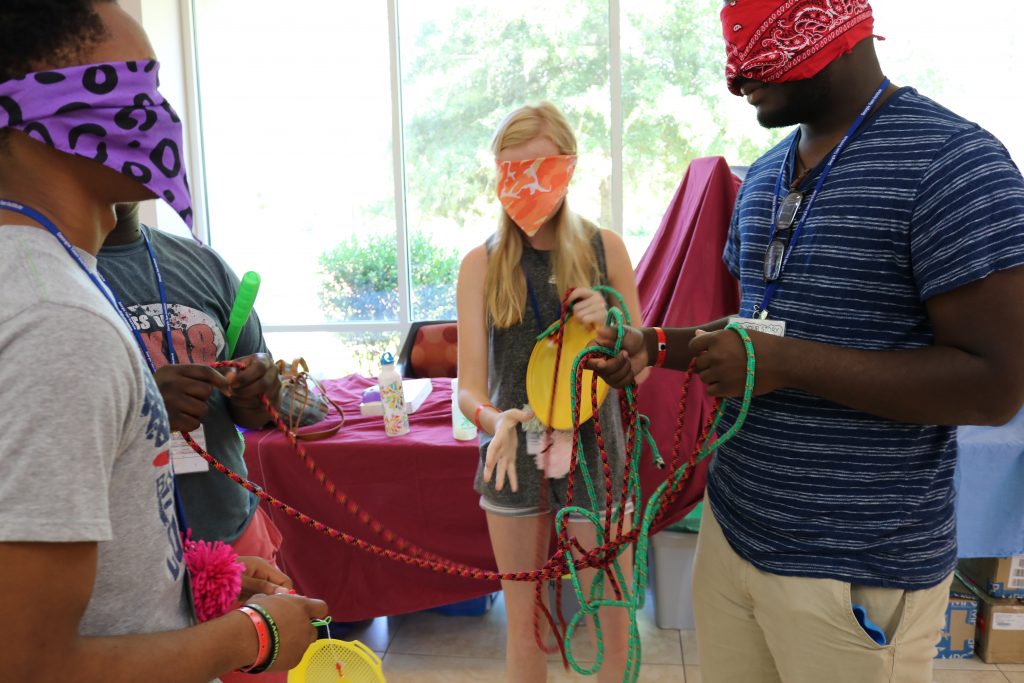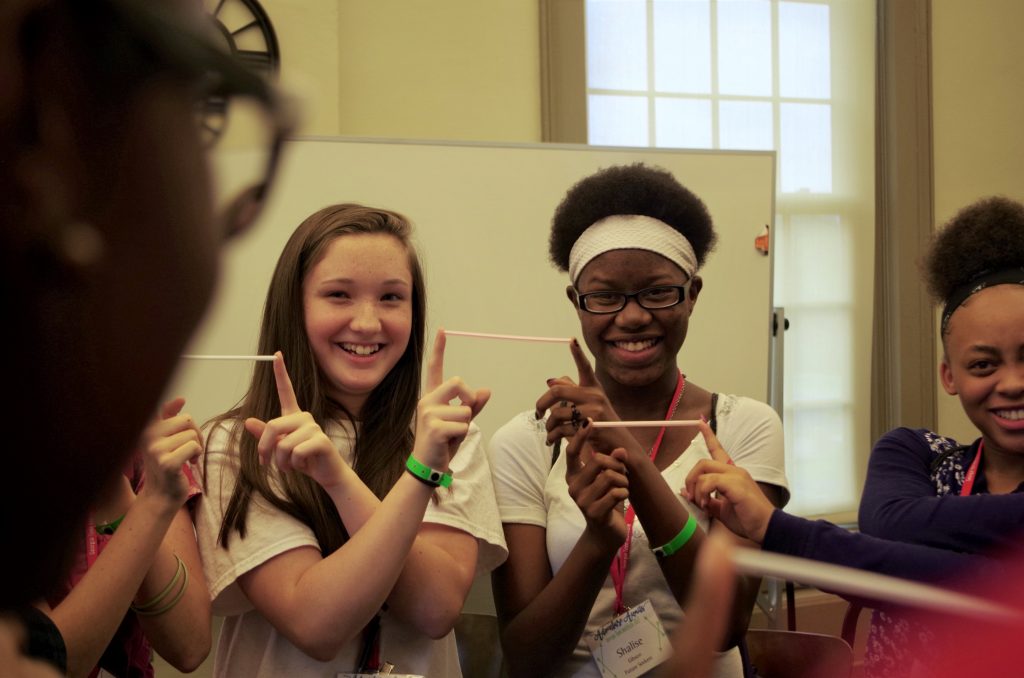“Coming together is the beginning. Keeping together is progress. Working together is success.” ~ Henry Ford
Your teen group will most likely consist of kids of who decide to give this adventure a try or whose parents encourage them to show up. Each group will remain just that — a group — unless some magic occurs and you do your part to guide them on their journey to evolve into a community.
So, what’s the difference? According to Merriam Webster, a group is “a number of people who are together in the same place.” A community, however, is “a unified body of individuals.” The key word here is unified. As much as you would like to wave a magic wand and have your teen group develop into a community of “BFFs,” it doesn’t quite happen that way.
While there is work on your part to ensure that each group progresses to a community, it is not an unsolved mystery as to how to make it happen. The secret to cultivating this progression in any group starts with an understanding of the stages of group development. Every group advances through predictable stages from inception to culmination. You can help your teen group progress from one stage to the next by recognizing where each group is in their development and intentionally selecting activities that are appropriate for each level.
Coming Together is a Beginning
 As with any new group, participants may be hesitant or anxious initially. The first several meetings are a time for youth to get to know and be comfortable with each other. There is typically automatic acceptance into the group in the beginning as they are fairly tolerant of one another. It is important for you to help members make introductions and find connections with others in a non-threatening way. Name games, icebreakers and other get-to-know-you activities that help teens discover commonalities with each other are appropriate to use until your group is ready to share at a deeper level.
As with any new group, participants may be hesitant or anxious initially. The first several meetings are a time for youth to get to know and be comfortable with each other. There is typically automatic acceptance into the group in the beginning as they are fairly tolerant of one another. It is important for you to help members make introductions and find connections with others in a non-threatening way. Name games, icebreakers and other get-to-know-you activities that help teens discover commonalities with each other are appropriate to use until your group is ready to share at a deeper level.
You may find teens prefer to stick with what is comfortable and familiar to them at first when choosing activities or getting involved in your program. This is perfectly OK! They will have the opportunity to branch out more as the experience unfolds and their comfort and confidence levels increase. This is your golden opportunity to set expectations and establish routines for your group meetings and discussions that will be the building blocks for future work and play together. The fun of this journey is just beginning!
Keeping Together is Progress
 Once the foundation is in place, you will often find your group will want to explore and try new things. They may be ready to go beyond the surface and share on a more meaningful level. You should provide activities for them that will allow them to do this in a safe way. Establish guidelines for these activities so that all have a chance to participate equally and fairly. It is crucial to improve on communication skills, especially sharing and listening, so the group is able to have a peaceful discussion when things aren’t going so well and to work through issues as they arise.
Once the foundation is in place, you will often find your group will want to explore and try new things. They may be ready to go beyond the surface and share on a more meaningful level. You should provide activities for them that will allow them to do this in a safe way. Establish guidelines for these activities so that all have a chance to participate equally and fairly. It is crucial to improve on communication skills, especially sharing and listening, so the group is able to have a peaceful discussion when things aren’t going so well and to work through issues as they arise.
There are bound to be disagreements and conflicts in any group — especially if they are together for an extended period of time. Your group may pull in all different directions; this is normal and to be expected. During this period, teens must work for acceptance in the group; they may even test expectations to see if you will follow through as promised in the beginning. No matter how tempting it is to deviate from your original plan when being tested, stick to your established routines to provide safety and comfort for them. They will respect and trust you even more because of it.
The key to moving on from this stage is to give youth the support they need to work through any issues they may be having. Do not ignore what is happening and hope it will go away. Activities that help teens learn how to work together toward a common goal and encourage the acceptance of individual differences while recognizing the strengths of others are paramount to making forward progress. It is even more fun once adversity is overcome!
Staying Together is Success
 Once your group has experienced the success of moving past challenging times and is working well together, now is the time to enjoy their cohesiveness. Take advantage of the ability they now have to work well with one another by planning special time to be together. A new adventure or outing could be the ticket for having the most fun ever.
Once your group has experienced the success of moving past challenging times and is working well together, now is the time to enjoy their cohesiveness. Take advantage of the ability they now have to work well with one another by planning special time to be together. A new adventure or outing could be the ticket for having the most fun ever.
As the experience nears its end, you will notice that youth can’t help but to flourish because of their individual and group successes along the way. They will exhibit more confidence and independence than they did at the beginning. Acceptance in the group has now been earned and friends are more like family. They are comfortable with expectations at this point, and it is good to change up routines to provide variety and new opportunities for growth.
The best of each member has now combined to form a strong team, and it can be difficult for them to go their separate ways after taking this journey together. You may observe how strong those bonds can be, especially when youth are together for long periods of time, because of the growth that is made after reaching the other side of struggles and conflicts. Spend time helping them put closure on their experience by allowing them to reminisce and say goodbye. Your hard work and intentionality has fostered the evolution of a group of teens — into a unified community. It is time to celebrate!
Additionally, know that any time a member joins or leaves your group you will experience a change in the overall dynamics. You will need to adjust accordingly, depending on where they are in the stages of group development. The possibility also exists for a group to get stuck in a particular stage or to digress to a previous stage. Patience and persistence are key to continued forward progress.
From Group to Community
 In genuine community there are no sides. It is not always easy, but by the time they reach community, the members have learned how to give up cliques and factions. They have learned how to listen to each other and how not to reject each other. Sometimes consensus in the community is reached with miraculous rapidity. But at other times it is arrived at only after lengthy struggle. Just because it is a safe place does not mean community is a place without conflict. It is, however, a place where conflict can be resolved without physical or emotional bloodshed and with wisdom as well as grace. According to M. Scott Peck, M.D., “A community is a group that can fight gracefully.”
In genuine community there are no sides. It is not always easy, but by the time they reach community, the members have learned how to give up cliques and factions. They have learned how to listen to each other and how not to reject each other. Sometimes consensus in the community is reached with miraculous rapidity. But at other times it is arrived at only after lengthy struggle. Just because it is a safe place does not mean community is a place without conflict. It is, however, a place where conflict can be resolved without physical or emotional bloodshed and with wisdom as well as grace. According to M. Scott Peck, M.D., “A community is a group that can fight gracefully.”
Activity Ideas for Progression from Group to Community
Coming Together: The leader starts a “getting acquainted web” by saying his/her name and then telling the group about something he/she likes to do, a goal for the experience, etc. Holding onto one end of a ball of yarn, the leader then throws the ball to someone in the circle who then introduces him/herself. The last person throws the ball back to the leader, completing the web (and creating a good visual of the community this group will become). To wind up the ball of yarn, reverse the order and repeat the information about the person to whom the ball is being thrown (Sandborn, 1994).
Setting Expectations: Establish the five-finger contract (or something similar) for having group discussions and interactions — thumb = do your best and have fun; index finger = take responsibility instead of pointing blame; middle finger = be supportive and respectful; ring finger = be committed to the group; pinky = keep yourself and others physically and emotionally safe (Frank, 2001).
Working Together: Challenge your members to create a “machine” that has not yet been invented for use in their teen group. Ensure that each person has a role when acting out the machine.
Staying Together: Create an obstacle course in a designated area for teens to take turns leading a partner who is blindfolded over, under, around and through various challenges using only verbal instructions. Be sure to demonstrate/discuss how to safely lead someone who cannot see (Frank, 2001).
 Saying Goodbye: Have group members throw a ball of yarn to one another and describe something they appreciate about the person catching the yarn until everyone in the group has been included. The resulting appreciation web represents the community they have created and the experiences they have shared. To undo the web, throw the ball in reverse order, this time having the person throwing the ball describe some aspect of the camp experience that will go with him/her (Sandborn, 1994).
Saying Goodbye: Have group members throw a ball of yarn to one another and describe something they appreciate about the person catching the yarn until everyone in the group has been included. The resulting appreciation web represents the community they have created and the experiences they have shared. To undo the web, throw the ball in reverse order, this time having the person throwing the ball describe some aspect of the camp experience that will go with him/her (Sandborn, 1994).
 Kim Aycock, MST, of Camp 2 Campus Learning Solutions has more than 30 years of experience blending the skills of a master teacher with the knowledge of a seasoned camp expert. She trains camp staff at all levels and speaks professionally at regional and national conferences. More information can be found on her website: www.kimaycock.com. Kim may be contacted at kimdaycock@gmail.com or 601-832-6223.
Kim Aycock, MST, of Camp 2 Campus Learning Solutions has more than 30 years of experience blending the skills of a master teacher with the knowledge of a seasoned camp expert. She trains camp staff at all levels and speaks professionally at regional and national conferences. More information can be found on her website: www.kimaycock.com. Kim may be contacted at kimdaycock@gmail.com or 601-832-6223.
References:
Frank, L. (2001). The caring classroom: Using adventure to create community in the classroom and beyond. Hamilton, MA: Project Adventure, Inc.
Peck, Scott M. (1987). The Different Drum: Community Making and Peace. New York, NY: Touchstone.
Sandborn, J. (1994). Bag of tricks II: More great games for children of all ages. Florissant, CO: Search Publications.
Schoel, J. & Stratton, M., eds. (1990). Gold nuggets: Readings for experiential education. Hamilton, MA: Project Adventure, Inc.
Weinstein, M. & Goodman, J. (1980). Everybody’s guide to non-competitive play: Playfair. Impact Publishers.
